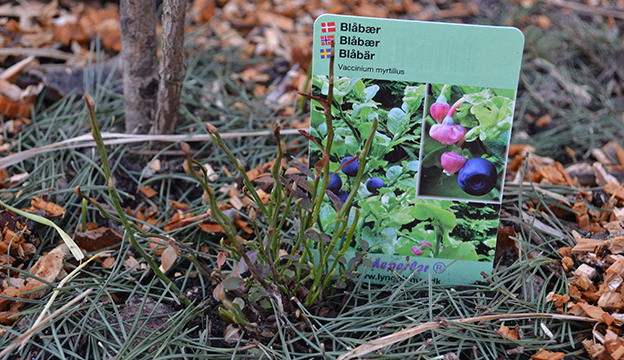
Certain plants are adapted thrive in soils that have an acidic pH—that is, a pH below 7—and cultivating them means paying attention to soil chemistry. Often, these plants are called “ericaceous,” because many of them are, or resemble, members of the widespread Ericaceae family. The prototypical representative of this botanical family is heather (Erica spp.), but it also includes a diversity of other well-known and commercially or horticulturally valuable plants:
- cranberries
- blueberries
- huckleberries
- azaleas
- mountain laurels
- gaultherias
- rhododendrons
More broadly, acid-loving plants are called “calcifuges.” The name, meaning “to flee from chalk,” references their intolerance of alkaline or lime-heavy soils, which are full of carbonite.
What Makes Soil Acidic?

Acidic soils result from a variety of environmental circumstances. They’re often found in areas of high precipitation, for example, because rainwater is slightly acidic and leaching can acidify soil. Areas with an abundance of organic matter, such as heaths, bogs or forests, can also be acidic because the carbon dioxide resulting from decomposition reacts with water to create carbonic acid. Further, acidic soils can be found near certain mineral deposits or under certain plants, like conifers, known to acidify the soil beneath them.
In chemistry terms, acidic soils are characterized by an excess of hydronium and aluminium ions. The chemical makeup of these soils interacts with the nutrient uptake of—as well as forms of nutrients available to—the plants that grow in them.
Cultivating a sustainable garden of low-pH-loving plants is a matter or understanding these environmental processes on a basic level and recreating them with yearly soil inputs. In horticultural practice, this has typically been accomplished with the use of packaged peat or histosols, which contain partially decayed vegetation and sphagnum moss. A brick of the stuff is typically used to plant landscape favorites, like blueberries and rhododendrons, with top-dressings following in the years after.
Peat, however, is mined unsustainably from delicate biomes that are among the world’s most important carbon sinks. Sustainable alternatives to peat include:
- leaf mulch (especially oak leaves—their high lignin content means they take a long time to break down)
- coffee grounds
- conifer needles
- coconut coir
- conifer chip mulch
These carbon-heavy additives also result in a soil that is lower in bioavailable nitrogen because the organisms that decompose carbon use nitrogen in order to break it down. Accordingly, plants that prefer acidic soils also often prefer nitrogen-poor soils, so adding layers of carbon-heavy material year after year will help maintain the soil.
In terms of selecting plants for an acidic garden, there are many options, depending on your climate. As mentioned, plants in the Ericaceae family usually thrive in these kinds of soils, as do most conifers and plants that typically grow in heaths or on forest floors. Looking around in the local biome can give some clues as to which local plants require an acidic soil.
A Bog Garden
I built a little acidic “raised bog garden” last year, and focused exclusively on edibles. An edible low-pH garden for USDA zones 4 through 8 can include:
- Highbush Blueberry (Vaccinium corymbosum) cvs. “Julia,” “Augusta” and “Septa”
- Wintergreen/Teaberry (Gaultheria procumbens)
- Plum Yew/Cowtail Pine (Cephalotaxus harringtonii)
- Spicy Wintergreen (Gaultheria miqueliana)
- Bilberry/Whortleberry/European Blueberry (Vaccinium myrtillus)
- Lingonberry/Mountain Cranberry/Cowberry (Vaccinium vitis-idaea)
- Crowberry (Empetrum nigrum)
- Bearberry/Kinnickinnick/Pinemat Manzanita (Arctostaphylos uva-ursi)
- Nagoonberry (Rubus arcticus x stellarcticus)
- Bunchberry/Quatre-temps, Crackerberry, Creeping Dogwood (Cornus canadensis)
Maintenance: Testing your Soil

After planting, a garden with acidic soil requires a little attention to soil detail in order to maintain healthy growth. Many of the plants mentioned above are what are called “dwarf shrubs,” which are very slow- and low-growing plants that will have a hard time out-competing more aggressive vegetative growth. Keeping the soil nitrogen level low and the acidity high can deter the growth of competitor plants that will crowd or shade out dwarf shrubs.
A basic soil pH and soil nitrogen test kit—either paper strips or a probe—is all that is needed to keep an eye on soil chemistry. These kinds tests are worthwhile in almost every kind of garden—not just acidic ones. Understanding and maintaining different kinds of soil chemistry in different areas of the garden is one of those skills that can take the health and cohesion of any landscape to the next level.





4 replies on “How To Garden In Acidic Soil”
[…] How To Garden In Acidic SoilHow To Spot Aphid DamageGet A Jump-Start on Cool-Season CropsOur Favorite Garden Season ExtendersCover Your Crops To Protect From Late Frosts7 Cool Hacks For Your Cold FrameCreate A Butterfly GardenThe Best New Seed-Starting Tools For 2016Start A Community Seed BankSow Seeds In The Winter Without Grow LightsRepurpose These 3 Waste Products For Building Garden SoilGarden Pests 101: Get To Know the Aphid jQuery(document).ready(function(){ "use strict"; jQuery('.related_slider').slick({ dots: false, infinite: true, speed: 300, slidesToShow: 4, slidesToScroll: 1, }); }); […]
[…] Bugs And How They Help Your GardenWhat Does No-Till Actually Mean?How To Start A Garden From ScratchHow To Garden In Acidic SoilHow To Spot Aphid Damage jQuery(document).ready(function(){ "use strict"; […]
[…] or mires—are unique and vital water-saturated habitats that house a number of threatened species: Acidic-soil lovers, like carnivorous plants and heathers, are among them. Like forests, peatlands are […]
[…] Another readily available material for mulch is leaf fall, which should ideally be decomposed for a season and then shredded before being applied to the garden. Leaves from trees like oak contain high levels of a woody compound called lignin, which means they are slower to decompose than other kinds of organic matter. They can cause the soil pH to lean towards the acidic side. […]